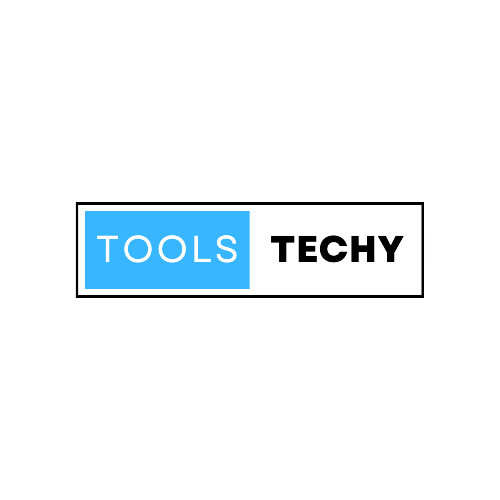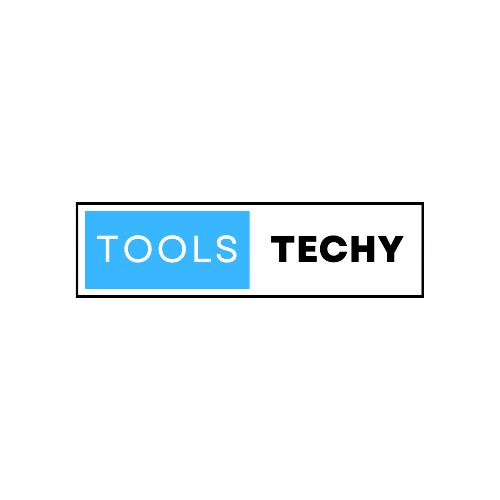The must have essential seo tool for website success in 2025
In an era where digital competition intensifies daily, having the Essential SEO tool at your fingertips can make or break your online presence. Among the many platforms vying for attention, SEMrush shines as a comprehensive solution that helps drive organic traffic, uncover untapped keywords, and outsmart competitors. As a user-generated content creator diving into real-world trials, this post breaks down why SEMrush is the go-to choice for serious marketers in 2025, how to leverage its Keyword Magic and competitor-analysis features to their fullest, and how it stacks up against Ahrefs
Ready to make SEMrush your Essential SEO tool? Dive into thediscounted and fully working semrush tool at around $3 here .
Why You Need an Essential SEO Tool in 2025
-
Market Saturation Is Fiercer: Millions of websites compete for the same search queries. Without a solid SEO strategy, it’s easy to get lost in the noise.
-
Search Engines Evolve Rapidly: Google’s algorithms continue to prioritize relevance, user intent, and content depth. To stay on top, you need data-driven insights.
-
Time and Resources Are Limited: Manually tracking keywords, backlinks, and competitor moves drains time. An Essential SEO tool automates research, letting you focus on content creation and strategy.
In short, if you want to keep pace, you need an all-in-one platform that provides real-time data, actionable recommendations, and scalability.
Introducing SEMrush: The All-in-One SEO Powerhouse
From the moment I first logged into SEMrush, it felt like discovering a treasure trove of marketing intelligence. The intuitive dashboard immediately highlights organic positions, paid traffic insights, and backlink profiles. But it’s the specialized toolsets—especially the Keyword Magic Tool and the Competitor Analysis suite—that truly set SEMrush apart as the Essential SEO tool for 2025.
As someone who’s tested multiple platforms, I found SEMrush’s interface remarkably user-friendly. Instead of flipping between tools and spreadsheets, I can access keyword data, audit my site, track rank progress, and analyze competitors—all within one login. There’s no steep learning curve: clear navigation, contextual tooltips, and a host of tutorials guide you step by step.
Keyword Magic Tool: Unlocking Untapped Opportunities
What Is the Keyword Magic Tool?
The Keyword Magic Tool is SEMrush’s flagship feature explicitly designed for robust keyword research. Instead of typing a query and sifting through pages of results, you can generate thousands of relevant suggestions in seconds, organized by topic, question format, and search intent.
How to Use It
-
Seed Keyword Entry: Enter a core term—e.g., “affordable SEO services”—and SEMrush fetches an extensive list of related keywords.
-
Filter by Metrics: Narrow down by search volume, keyword difficulty (KD), cost-per-click (CPC), and competitive density.
-
Group by Topic: The tool clusters similar keywords under “keyword groups,” making it easy to plan content silos or pillar pages.
-
Uncover Long-Tail Gems: Within each group, filter for low KD and decent volume to find long-tail phrases that competitors may have overlooked.
Why It’s a Game-Changer
-
Speed and Scale: Rather than manually compiling lists from multiple sources, SEMrush generates thousands of options in one click.
-
Intent and Context: By categorizing keywords into “Related,” “Question,” and “Phrase Match,” you instantly understand user intent—vital for crafting content that ranks.
-
Competitor Cross-Check: You can see which keywords your rivals rank for, then target those with less competition but similar intent.
In my tests, I uncovered a handful of “low-hanging fruit” long-tail keywords—phrases with 1,000–2,000 monthly searches and KD under 40—that drove significant traffic within weeks. Without Keyword Magic, I’d never have discovered those hidden niches so quickly.
Competitor Analysis: Gaining the Edge
Knowing your competitors’ strengths and weaknesses is half the battle. SEMrush’s Competitor Analysis suite provides multiple ways to dissect rival sites and tailor your strategy accordingly.
Core Competitor Tools
-
Domain Overview
-
Provides a snapshot of another domain’s traffic trend, top-performing pages, and primary keywords.
-
Helps you gauge competitor health at a glance (e.g., organic vs. paid traffic).
-
Keyword Gap
-
Allows side-by-side keyword comparison between up to five domains.
-
Easily spot “Missing Keywords” that competitors rank for but you don’t.
-
Traffic Analytics
-
Estimates total visits, bounce rate, traffic sources, and audience demographics for competitor sites.
-
Use this to benchmark performance and identify high-value traffic channels.
Backlink Analytics
-
Reveals competitors’ backlink profiles, including referring domains, link types, and anchor texts.
-
Find high-authority domains linking to rivals and pitch your content for similar links.
How to Analyze Competitors and Find Untapped Keywords
-
Identify Top Competitors:
-
Start with a simple Google search of your primary keyword. Who’s dominating the top three spots?
-
Enter those domains into SEMrush’s Domain Overview to confirm they compete in your niche.
Run a Keyword Gap Analysis:
-
Input your domain and up to four competitor domains into the Keyword Gap Tool.
-
Focus on the “Missing” and “Weak” tabs: these reveal high-potential keywords your rivals rank for (positions 1–20), but you don’t.
Filter for Low Competition:
-
Sort the missing keyword list by KD (keyword difficulty) ascending. Target keywords with KD under 40 and monthly volume over 500.
-
Those sweet-spot keywords will be easier to rank for and can yield immediate organic visibility.
Audit Competitor Top Pages:
-
In Domain Overview, scroll to the “Top Organic Pages” report. Identify the content that drives most traffic for competitors.
-
Replicate or improve upon those pages—adding fresh insights, updated stats, or deeper multimedia—then optimize for missing keywords discovered earlier.
Backlink Opportunity Mining:
-
In Backlink Analytics, filter referring domains by high Authority Score (AS).
-
Note domains linking to competitors’ resources. Outreach to those sites with an improved resource (e.g., an in-depth guide) and request a link. This process can yield low-cost, high-quality backlinks.
By combining these approaches, you effectively map out competitors’ keyword universes, then tactically fill the gaps in yours—earning traffic your rivals didn’t even know they were leaving behind.
Pros and Cons of SEMrush
|
Pros |
Cons |
|
Comprehensive All-in-One Suite: SEO, PPC, content marketing, social media, and competitive intelligence in one platform. |
Pricing: Can be expensive for solopreneurs or very small teams. Basic plans start around $119.95/month. |
|
Keyword Magic Tool: Generates massive keyword lists, organized by topic and intent, with robust filtering. |
Learning Curve: The breadth of features can overwhelm beginners; requires time investment to master. |
|
Competitor Analysis: Accurate insights into competitor keywords, traffic, and backlink profiles. |
Data Accuracy: While generally strong, some smaller niche websites’ data may be estimated rather than exact. |
|
Content Audit & On-Page SEO Checker: Identifies technical and content issues with suggestions for improvements. |
Limits on Lower-Tier Plans: Restrictions on the number of reports, keyword tracking, and projects. |
|
Regular Updates & New Features: SEMrush continuously adds tools like Brand Monitoring, Local SEO Toolkit, and AI-driven writing assistant. |
User Interface Complexity: Advanced features may require multiple clicks to access, slowing down basic tasks. |
SEMrush vs. Ahrefs: Which Is Truly the Essential SEO Tool?
Many marketers ask whether SEMrush or Ahrefs is superior. Below is a side-by-side comparison chart highlighting each platform’s strengths and weaknesses:
|
Feature / Criterion |
SEMrush |
Ahrefs |
|
Keyword Research |
Pros: • Keyword Magic Tool with billions of keywords, grouped by topic. • Filters for search volume, KD, CPC, intent. • “Questions” filter surfaces Q&A-style terms. |
Pros: • Keyword Explorer with clickstream data for click metrics. • Accurate search volume from multiple data sources. • “Also rank for” feature surfaces related keywords. |
|
Cons: • Some long-tail data may lag behind real-time trends. |
Cons: • Keyword suggestions may be fewer for certain less-common languages/niches. |
|
|
Competitor Analysis |
Pros: • Domain Overview provides complete traffic breakdown (organic, paid, display). • Keyword Gap and Backlink Gap tools excel at identifying missed opportunities. |
Pros: • Site Explorer gives granular backlink data, including link types and new/lost link alerts. • Top Pages report clearly shows traffic-driving pages. |
|
Cons: • Traffic estimates occasionally overstate small-site metrics. |
Cons: • No integrated PPC/ad insights; separate subscription needed for ad data. |
|
|
Backlink Analysis |
Pros: • Backlink Analytics and Backlink Audit tools to detect toxic links. • Outreach tool helps manage link-building campaigns. |
Pros: • Massive, up-to-date backlink index; often cited as the most extensive database in the industry. • Site Explorer shows “New” and “Lost” links in real-time. |
|
Cons: • Backlink data may update less frequently than Ahrefs. |
Cons: • No built-in disavow file generator; you must export links and manually create. |
|
|
Content & On-Page SEO |
Pros: • On-Page SEO Checker gives actionable recommendations. • SEO Content Template suggests semantically related terms and readability improvements. |
Pros: • Content Explorer helps find top-performing content by topic. • “Best by links” feature surfaces authoritative content easily. |
|
Cons: • Lacks a dedicated content ideation engine beyond manual keyword research. |
Cons: • No rubric for on-page SEO best practices; more reliant on manual interpretation. |
|
|
User Interface & Learning Curve |
Pros: • Dashboard is clean and modular; customizable. • In-app tutorials, webinars, and an active user community. |
Pros: • Intuitive UI for backlink and content exploration. • Quick to grasp for those focused on link and content analysis. |
|
Cons: • Overwhelming number of features for beginners. |
Cons: • Fewer beginner resources; steeper ramp-up for full suite. |
|
|
Pricing |
Pros: • Tiered plans (Pro, Guru, Business) with extensive feature sets. • Occasional discounts and bundled pricing with other Semrush tools. |
Pros: • Tiered pricing (Lite, Standard, Advanced, Enterprise) offering flexibility. |
|
Cons: • Higher cost for full access; Pro plan still $119.95/month. |
Cons: • Advanced plans can be pricey ($179/month+), especially for content-heavy marketers. |
Bottom Line:
-
Choose SEMrush if you need a true all-in-one platform that covers keyword research, competitor insights, PPC data, and on-page audits in a single dashboard. Its Keyword Magic Tool and competitor-gap analysis tools make it the Essential SEO tool for those who want deep data and actionable recommendations.
-
Choose Ahrefs if your primary focus is backlink research and content discovery. Ahrefs’ massive link index and Content Explorer are unparalleled, but you may need a separate product (like SEMrush) for PPC insights or advanced on-page audits.
Key Takeaways
-
SEMrush Is Truly the Essential SEO Tool: With its comprehensive suite—Keyword Magic Tool, Competitor Analysis, Backlink Analytics, and Content Audit—SEMrush offers end-to-end SEO solutions.
-
Keyword Magic Tool Unlocks Untapped Niches: By clustering keywords into topic groups and filtering for low difficulty, you can uncover high-potential, underused phrases to fuel rapid growth.
-
Competitor Analysis Provides a Competitive Edge: Tools like Keyword Gap and Domain Overview let you find the exact keywords your rivals rank for, revealing gaps in your own strategy.
-
Balancing Pros and Cons: SEMrush’s broad feature set comes at a cost and requires time to master. If budget or simplicity is essential, consider Ahrefs for link-focused research or complementary tools.
-
SEMrush vs. Ahrefs: Both platforms excel in their domains—SEMrush for all-around SEO and PPC intel, Ahrefs for backlink and content performance. Your choice depends on your primary goals: broad marketing data vs. deep link analysis.
By treating SEMrush as a partner rather than just a tool, you empower yourself to outmaneuver competitors, discover hidden keyword opportunities, and scale your SEO efforts in 2025 and beyond.
Ready to make SEMrush your Essential SEO tool? Dive into their free trial or explore pricing options here.






Comments (0)